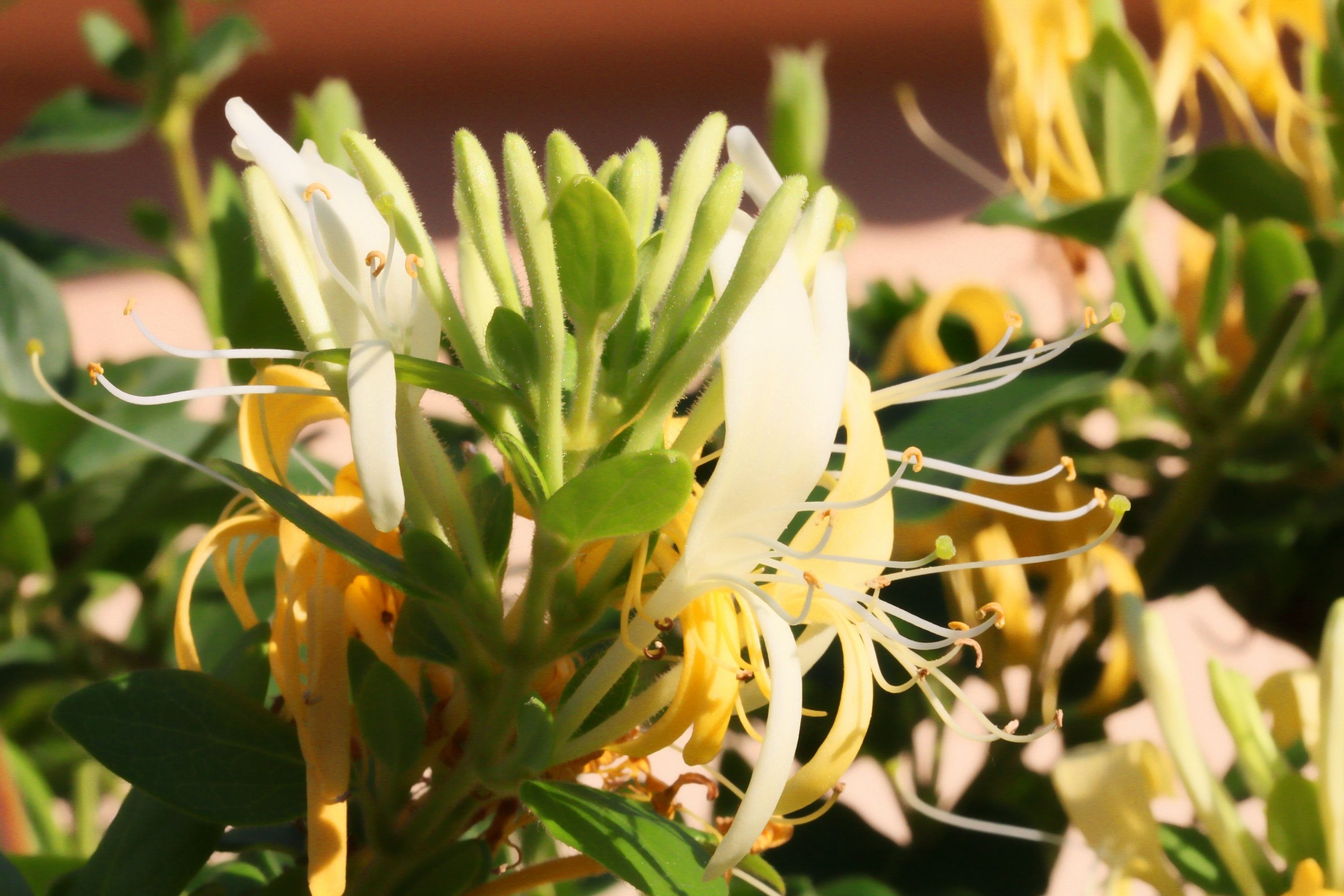Chaparral honeysuckle
(Lonicera interrupta)

Description
Lonicera interrupta, commonly known as chaparral honeysuckle, is a species of plant found in the western United States. It is native to chaparral and mixed forest habitats in the foothills and mountain ranges of California, and to some mountains in Arizona. Lonicera interrupta is a hardy shrub with a woody trunk. It is quite drought-tolerant. It sends up spiked inflorescences of yellow honeysuckle flowers. Each flower is about a centimeter long, with prominent stamens extending from the rolled-back lips. The flowers are attractive to hummingbirds. The fruits are red, spherical, and shiny. Honeysuckles are arching shrubs or twining vines in the family Caprifoliaceae, native to northern latitudes in North America and Eurasia. Approximately 180 species of honeysuckle have been identified in North America and Eurasia. Widely known species include Lonicera periclymenum (common honeysuckle or woodbine), Lonicera japonica (Japanese honeysuckle, white honeysuckle, or Chinese honeysuckle) and Lonicera sempervirens (coral honeysuckle, trumpet honeysuckle, or woodbine honeysuckle). L. japonica is an aggressive, highly invasive species considered a significant pest on the continents of North America, Europe, South America, Australia, and Africa. Some species are highly fragrant and colorful, so are cultivated as ornamental garden plants. In North America, hummingbirds are attracted to the flowers, especially L. sempervirens and L. ciliosa (orange honeysuckle). Honeysuckle derives its name from the edible sweet nectar obtainable from its tubular flowers. The name Lonicera stems from Adam Lonicer, a Renaissance botanist. Most species of Lonicera are hardy twining climbers, with a minority of shrubby habit. Some species (including Lonicera hildebrandiana from the Himalayan foothills and L. etrusca from the Mediterranean) are tender and can only be grown outside in subtropical zones. The leaves are opposite, simple oval, 1–10 cm long; most are deciduous but some are evergreen. Many of the species have sweetly scented, bilaterally symmetrical flowers that produce a sweet, edible nectar, and most flowers are borne in clusters of two (leading to the common name of "twinberry" for certain North American species). Both shrubby and vining sorts have strongly fibrous stems which have been used for binding and textiles.
Taxonomic tree:







